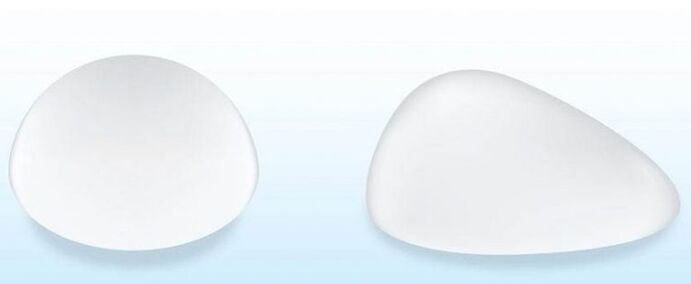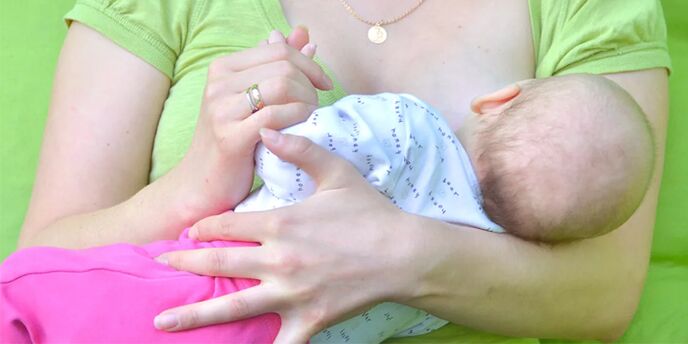Shape correction, breast augmentation is one of the most popular plastic surgery procedures. With the help of mammoplasty, you can correct congenital or acquired breast defects, restore their volume and elasticity after childbirth and breastfeeding. Properly performed surgery will help a woman become more attractive and confident.
Indications for surgery
- Descent and decreased elasticity of the mammary glands (mastoptosis).
- Increased chest volume while maintaining tone and position (macropathy).
- Shrinkage of the mammary glands after breastfeeding.
- Small breast size (micromastia).
- Increased breast volume in men (gynecomastia).
Types of mammoplasty
- Augmentation Mammoplasty(Endoprosthetics) - breast enlargement, shape correction with implants. It is used after childbirth, when breastfeeding, with congenital asymmetry.
- Reduction mammoplasty- Breast reduction with mastoptosis or macropathy.
- Mastopexy- breast lift. It is indicated in mastoptosis when the breast volume meets the requirements for the operation.
Endoprosthetics of the mammary glands
During the operation, silicone prostheses (implants) are inserted into the mammary glands. The choice of incision site depends on the woman. The implant is placed under the pectoral muscle and, if the breast volume allows, between the muscle and the mammary gland. The incision is sutured and drainage is not required. The nipple and areola are enlarged after the operation.
Breast implants
Endoprostheses made of silicone or polyurethane correct the volume and shape of the bust and give a feeling of natural body tissue.
The lifespan of the implants is more than 15 years, after which they are recommended to be replaced.

Products differ in a number of indicators:
- Fillers: cohesive gels or saline (sodium chloride). The composition of the gels is more elastic, more homogeneous, lighter, but dangerous for the body if leaking. Saline solution is safer, softer, cheaper. Negative properties - gargles when moving, prone to leakage.
- Structure: rough (structured) or smooth. Structured implants are more stable, but skin folds can be caused by friction between body tissue on their surface. The disadvantage of smooth dentures is the likelihood of displacement.
- Shape: anatomical or round. The former have a more natural look, while the latter maintain the symmetry and shape of the breast even when moved.
Reduction mammoplasty
In this type of surgery, fatty tissue and breast tissue are partially removed, changed in size, and given a new shape.
Removing excess tissue will reduce the chance of cancer.
Reduction mammoplasty options:
- Liposuction. The method is considered conservative and does not leave any seams. Designed for smaller breast reductions with slight degrees of mastoptosis.
- Short (vertical) seam. A popular method where the breasts keep their natural shape and the nipples are tender. The operation takes little time and the proportion of complications is low.
- T-shaped (anchor) cut. The classic method that is used for large amounts of tissue. Its disadvantages are the length of recovery, a large scar.
- Amputation with nipple transfer. It is used for very large breasts. The method is associated with a high risk of injury to the mammary glands, loss of nipple sensitivity, and inability to breastfeed.
Mastopexy
A breast lift without implants can be done in different ways:
- Vertical is used for mastoptosis of 1-2 degrees, the seams are almost invisible, the cosmetic effect is long-lasting. The method is ineffective for lowering the chest by 3-4 degrees.
- Anchor mastopexy provides good results for ptosis of any complexity. The disadvantages include a longer recovery period, noticeable stitches, and an increased risk of injury to the breast tissue.
- Periareolar mastopexy is the removal of a small piece of skin around the areola. It is indicated in pseudoptosis, but ineffective in other forms of sagging of the bust.
Operational phases
For an excellent plastic surgery result, high quality medical care in all 3 phases is important. The preparation time takes 1-2 weeks. The actual surgical procedure takes 1 to 4 hours.
Full recovery occurs within 1. 5 months.
Preparing for the mammoplasty

The operation is carried out no earlier than a year after the end of lactation. The use of hormonal contraceptives, aspirin and preparations containing salicylates is prohibited 2 weeks before the operation.
You should stop drinking alcohol, smoking.
In preparation, research is essential:
- general and biochemical blood tests;
- Electrocardiogram;
- Blood test for anticoagulants (coagulogram);
- Ultrasound of the mammary glands;
- general urinalysis
- Tests for hepatitis and HIV viruses.
The course of the surgical procedure

The breast surgery is performed under general anesthesia. Expander dermatonia is a special form. It is used to increase the volume of the breast in the absence of autologous tissue and large implant sizes. The procedure is carried out in 2 stages. First, an expander is installed to gradually expand the breast tissue for 1, 5–2 months.
When the desired size is reached, an endoprosthesis is placed in the breast.
Surgical incision methods:
- Through the fold under the breast (underbust access). Safe method of augmentation mammoplasty. A scar from a 4–5 cm incision disappears over time under a slightly lowered chest. Access is difficult with micromastia in thin girls.
- An incision around or along the lower areola arch (periareolar access). Advantage - surgical scars are almost invisible. This method is not recommended for patients who wish to breastfeed due to the high risk of breast injury.
- Endoscopic augmentation via the axillary access. High-tech devices help install the implant without damaging blood vessels and nerve fibers. A 3-4 cm incision is made in the armpit area, then the scar is naturally masked. The volume of the implant is limited - up to 400 ml.
- Endoscopic access through the umbilicus. This method is little used because of the distance of the entry point from the surgical site and the difficulty of creating a "pocket" for the prosthesis.
Rehabilitation after mammoplasty

If the operation went without complications, the patient spent up to 3 days in the hospital. After discharge, it is necessary to visit associations. Moderate pain in the surgical area that occurs in the first few days is considered natural. Postoperative edema can cause tension in the skin, which will subside after approx. 5-7 days.
After 4-6 weeks the breast sags slightly, looks more natural and capsules form around the implants.
Rules for successful recovery:
- Do not put weight on the shoulder girdle or lift weights.
- Do not visit fitness clubs, swimming pools, saunas, baths.
- Sleep on your back.
- Don't put your hands up.
- Be sure to wear compression clothing after breast augmentation.
Possible complications
- Capsular contracture. The body forms a shell around the endoprosthesis, which can lead to its displacement, violation of the symmetry of the mammary glands and their hardening.
- Infection. Infection occurs during surgery due to violations of the rules of asepsis or after failure to observe antiseptic standards of care. The period of special risk is 1 week after the operation.
- Keloid, hypertrophic scars. They occur when the body is predisposed to produce them. The formations look like dense ridges that rise above the surface of the skin and spoil the appearance of the breast.
- Build-up of blood, serous fluid (hematoma, seroma) and thereby darkening of the skin color. It occurs when blood vessels, lymph vessels are damaged during an operation or during the recovery period. Complications arise due to low blood clotting, a sharp rise in blood pressure and an incorrectly dimensioned endoprosthesis.
- Reduction or loss of sensitivity of the nipples, areolas. Often occurs when large breasts are shrunk with a reduction mammoplasty due to nerve damage.
- Rupture of the implant. It occurs due to the thin shell that is often found in inexpensive dentures. Salt filler is easily absorbed by the body without causing harm. Damage to an endoprosthesis with a cohesive gel is not always noticeable, but dangerous if silicone gets into body tissue.
Breastfeeding after the operation

The safest operation is an incision in the armpit (transaxillary) or under the chest (underbust).
Breastfeeding is allowed approximately a year after the operation.
Breastfeeding problems can occur in the following cases:
- The prosthesis is placed in such a way that it compresses the mammary glands and reduces the amount of milk they produce.
- A cut along the areola can be more likely to injure the nerve endings around the nipple.
- Reduction plastic, combined with a reduction in the size of the breast, disrupts the milk ducts and blocks their functions.
In which cases is breast plastic surgery contraindicated?
- Cardiovascular diseases, varicose veins (thrombophlebitis, thrombosis).
- Severe forms of mastopathy.
- Oncology.
- Bleeding disorders, diabetes mellitus.
- Infectious diseases (ARVI, influenza).
- Neurological, mental disorders.
- Pregnancy, lactation.
- Age under 18.
Advantages and disadvantages of mammoplasty

Advantages of plastic breast correction:
- Use of modern interventions.
- Correction of congenital and acquired defects of the mammary glands.
- Long-lasting and pronounced aesthetic effect.
- Short operation times.
- The ability to choose the shape and material of endoprostheses at will.
- Preservation of lactate ability.
Possible disadvantages are:
- Skin marks from cuts - stitches, scars (unless special absorbable materials were used).
- Risk of complications (infection, breast deformity, bleeding).
- The need to change endoprostheses every 10-15 years.
- The high cost of mammoplasty.
- The need for general anesthesia.
- Painful sensations in the first postoperative days.
- The need to constantly wear compression underwear.
- A long period of rehabilitation (from several months to a year) with refusal to exercise, physical activity, pregnancy, breastfeeding.




























